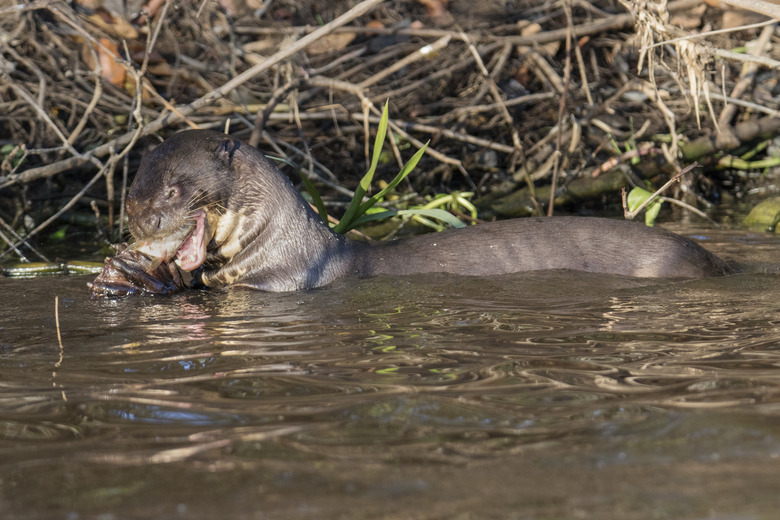Plants & Animals Unique To The Atchafalaya River Basin
The Atchafalaya Basin is one of the largest swamp areas in the United States and serves as the river basin of the Atchafalaya River, a 135-mile tributary of the Mississippi River. The region's warm climate provides a fostering environment for a host of wildlife species and plants. Many of the trees in the Atchafalaya River Basin were once used in the timber industry, causing a decline in certain wildlife populations. However, much of this region is now protected by the United States government.
Mammals
Mammals
According to the Southeastern Association of Fish and Wildlife Agencies, the North American river otter, or Lutra canadensis, is one of the most common mammals in Louisiana. This species occurs in most wetlands area in the state, including the Atchafalaya River Basin. When fully mature, these river otters are three to four feet in length.
The Louisiana black bear, or Ursus americanus luteolus, is a subspecies of the black bear and found in swamp areas throughout southern Louisiana, including the Atchafalaya River Basin. Once an abundant species, the Louisiana black bear's population has declined due to overhunting and habitat destruction. This bear is considered threatened by the U.S. government.
Trees
Trees
One of the more common trees in the Atchafalaya River Basin is the bald cypress, or Taxodium distichum. These coniferous trees do not lose their foliage in the winter. They dwell in or close to the water's edge. After fully maturing, bald cypress trees reach heights of approximately 130 feet. Most of these trees are found in the central region of the Atchafalaya River Basin.
Water tupelo, or Nyssa aquatica, is found in swampy areas throughout the Atchafalaya River Basin. Similar to the bald cypress, the roots of this tree are often submerged in water. This tree produces greenish flowers in the months of March and April. Water tupelos are often used in the timber industry.
Birds
Birds
Roseate spoonbills, or Platalea ajaja, resemble flamingos due to their pink-colored feathers. However, this species has a green head. It also has a spatula-shaped bill that it uses for finding food. Like the flamingo, the color of its feathers come from the keratin found in shrimp, which is a part of the spoonbill's diet.
Found commonly throughout southern Louisiana, great egrets, or Casmerodius albus, are white-feathered birds found in the Atchafalaya River Basin. In the 19th century, these birds were hunted for their plumes and nearly became extinct. Great egrets will not leave the basin unless a winter is abnormally cold.
Reptiles
Reptiles
The American alligator, or Alligator mississippiensis, is native to the Atchafalaya River Basin, according to the History Channel. This reptilian species is approximately 10 to 15 feet long when mature. National Geographic states the American alligator species could be over 150 million years old, making it one of Earth's oldest wildlife species.
The National Wildlife Federation states cottonmouth snakes, or Agkistrodon piscivorus, are found in the confines of the Atchafalaya River Basin. When they are adults, cottonmouths can reach lengths of three to four feet. Cottonmouths are venomous. This species of snake possesses heat-sensing receptors between its nostrils and eyes.
Cite This Article
MLA
Davis, Skip. "Plants & Animals Unique To The Atchafalaya River Basin" sciencing.com, https://www.sciencing.com/plants-unique-atchafalaya-river-basin-8071065/. 22 November 2019.
APA
Davis, Skip. (2019, November 22). Plants & Animals Unique To The Atchafalaya River Basin. sciencing.com. Retrieved from https://www.sciencing.com/plants-unique-atchafalaya-river-basin-8071065/
Chicago
Davis, Skip. Plants & Animals Unique To The Atchafalaya River Basin last modified March 24, 2022. https://www.sciencing.com/plants-unique-atchafalaya-river-basin-8071065/
